Whereas Hanoi food tends to be more delicate, sticking to traditional recipes that go lighter on seasonings and spices, Saigon is truly a “hot pot” food city, voraciously combining ingredients and recipes from many different regions and cultures.
While Saigonese food has made its way through the country, what was born here is still best here. Experience Vietnam’s largest city through its dizzying array of local cuisine, working through street food staples up to fine dining experiences.
Ho Chi Minh City Street Food
Ho Chi Minh City’s cuisine is at its best on plastic chairs in tiny alleys. There’s more street food here than anything else, ranging from little popup carts transported by motorbike to enormous streetside eateries with tables and chairs consuming the sidewalk end-to-end.
Snails
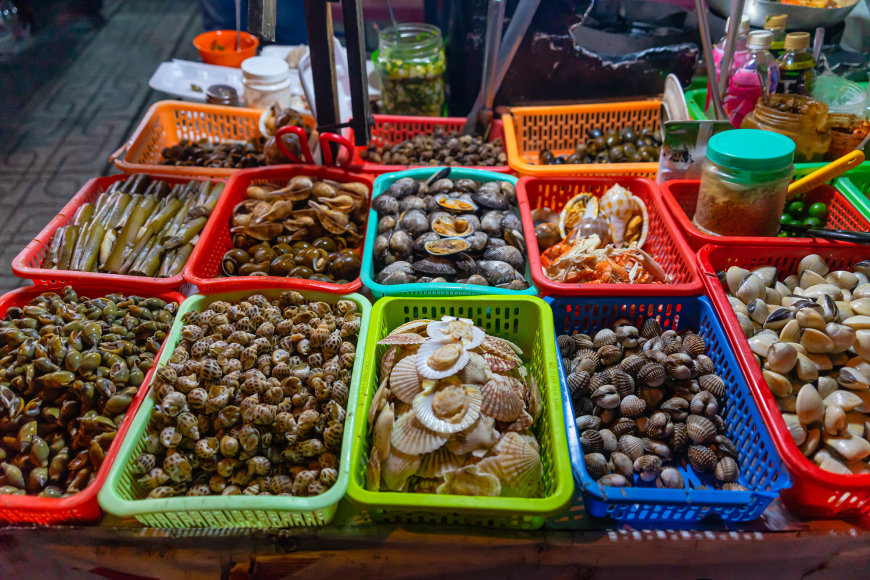
Source: Internet
Snails are the ultimate street food. They pair brilliantly with cold beer, and need to be eaten one by one, skillfully plucked from their shells. It’s fair to say snails serve a munch-function much like peanuts in Western bars, but instead of being dry and salty they are boiled, steamed, grilled, or sauteed, then slurped from rich and spicy sauces. Eating snails is a messy ordeal, worth every stain and napkin.
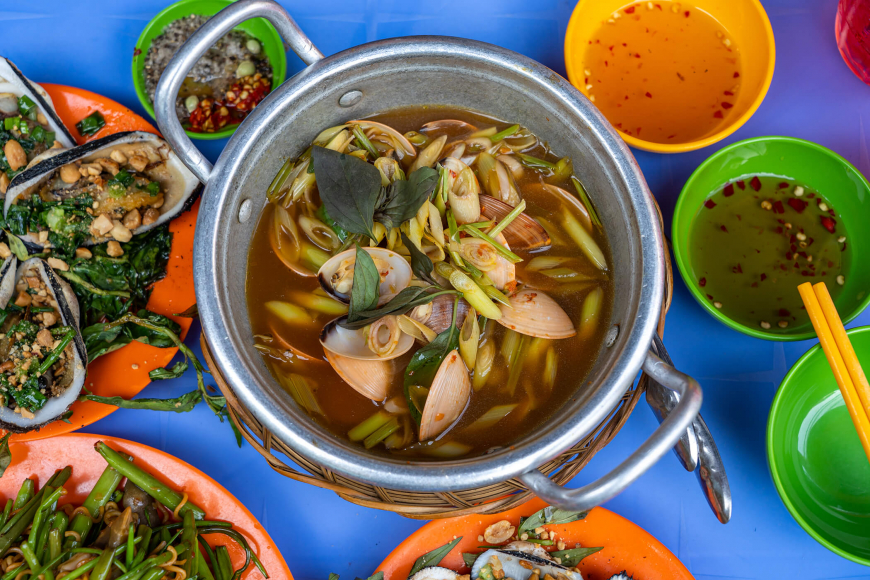
Source: Internet
Banh mi
Next to pho, banh mi is perhaps the best-known Vietnamese dish. The iconic sandwich is said to have originated in Ho Chi Minh City and has since made its way around the world, but is prepared very differently in different parts of Vietnam. Because the baguette is the centerpiece of the dish, a good banh mi is dependent on the quality of bread.
The soft and crunchy baguette is first covered with pate and chili sauce, then stuffed with a variety of meats, fresh herbs, and pickled vegetables, usually carrot and daikon. The sauce is mandatory, and ties together the salty, sweet, and spicy flavors. The convenient delicacy is eaten at any time of the day and sold everywhere at absolutely any time. Try banh mi from a few different sellers to get used to the subtle differences.
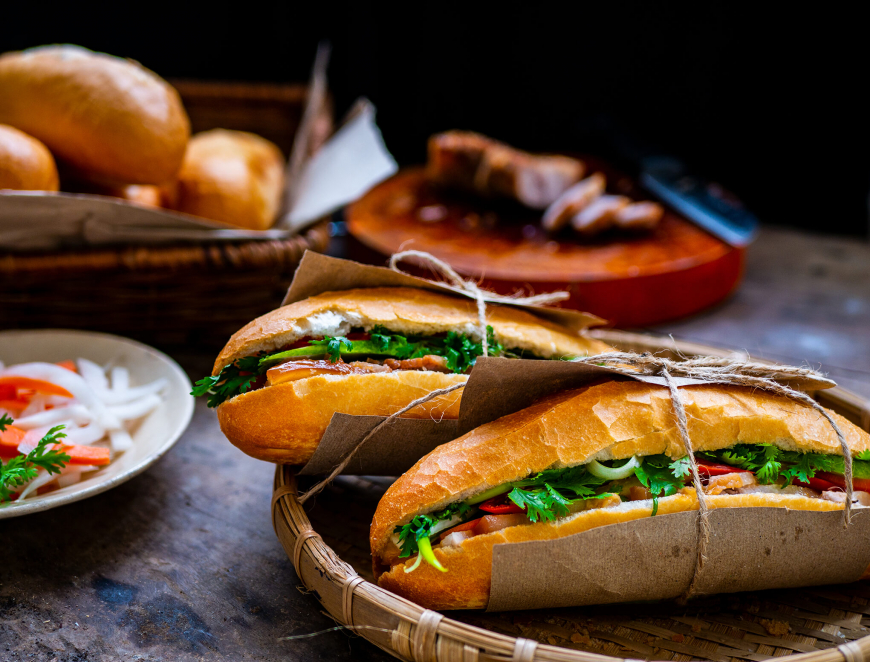
Source: Internet
Com Tam
Com Tam is perhaps the most essential Saigonese dish, a city staple found on nearly every street. The smell of barbecued pork wafts from com tam eateries to perfume busy streets and lure in hungry passers-by at all hours of the day.
Marinated pork ribs are slow-grilled over low heat for hours, allowing the flavor to absorb evenly while the meat remains juicy and tender. The ribs are then served over “broken rice” (rice that has been broken or fractured during harvest or processing), paired with an omelet, egg rolls, and sausages, and topped with onion fat or pork grease. Be sure to add a hefty serving of fresh and pickled vegetables for the full experience.
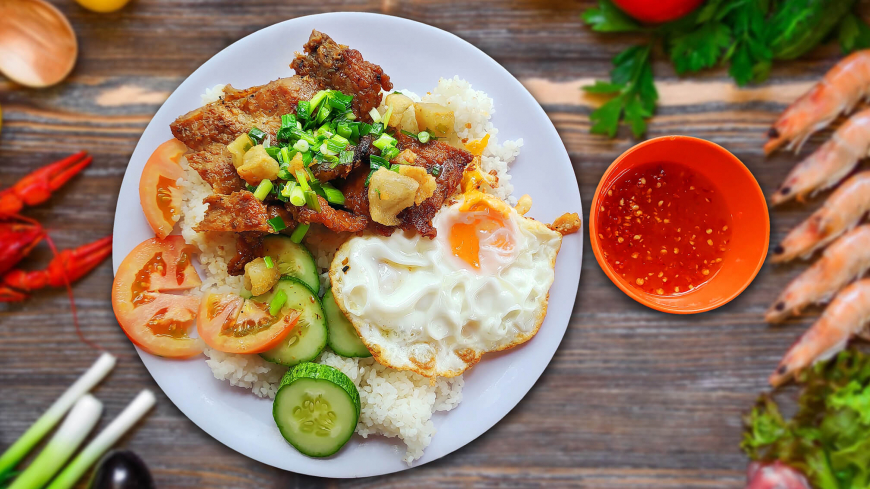
Source: Internet
Hu tieu
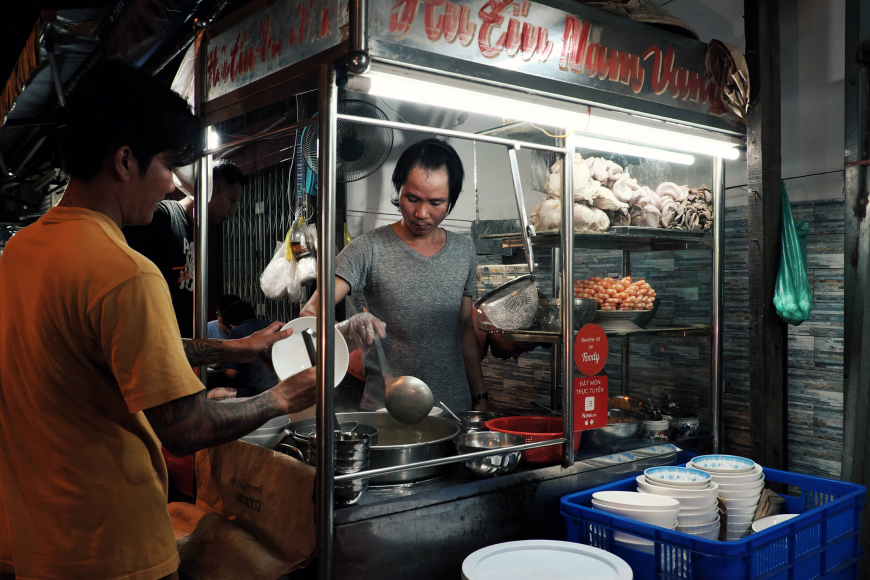
Source: Internet
Pho gets all the acclaim as Vietnam’s national soup, but hu tieu gives pho a run for its money. Pho is best in Hanoi, where northerners have spent a hundred years perfecting the recipe, while hu tieu is best in Ho Chi Minh City.
As with all Vietnamese soups, the best bits are in the broth. Hu tieu broth is simmered for hours with pork bones, dried squid and shrimp, and root vegetables. It’s a delicate, slightly sweet, clear broth, and is usually topped with boiled eggs and shrimp as well as pork every which-way: ground, lean, liver, intestines, and tongue. Different hu tieu eateries have different toppings, but these are the most common. Add a fistful of lettuce, bean sprouts, and scallions for balance.
Hu tieu can be served as a dry salad as well as a soup. When served as a salad, the broth comes in a bowl on the side – it’s the backbone of the dish.
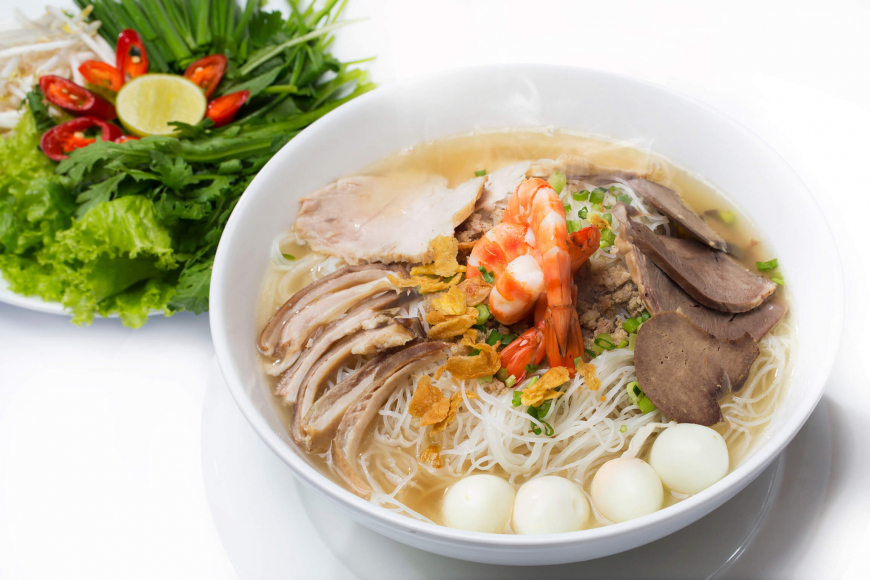
Source: Internet
Where to Eat in Ho Chi Minh City
Ho Thi Ky Street
Ho Thi Ky is famous for two things: food and flowers. Ho Thi Ky Market is the biggest flower wholesale market in the city, where fresh flowers are brought in by truckloads from Da Lat and neighboring provinces. The market looks and smells like a garden, colorful and aromatic, making it a welcome backdrop to the neighboring food street.
Ho Thi Ky food street is only a few hundred meters long, yet it has managed to pack an implausible number of food and drink stalls into that space. Students, TikTokers, and young professionals head here to eat after class, snack on the go and snap flicks for social media. The street is Instagram-famous for good reason. Everything is both delicious and affordable, and it’s possible to eat for under 10k VND/dish. Sweet and savory noodle soups, snails, fruits, and cakes are all on offer, from Saigon staples like pha lau to unique specialties like tamarind seed sweet soup.
Alley 76 Hai Ba Trung
Alley 76 of Hai Ba Trung Street is even smaller than Ho Thi Ky and yet somehow offers just as much affordable diversity. This is an afternoon snack spot, at its peak between 3 and 6pm, meaning it’s a go-to gathering point for students and off-the-clock office workers.
Snacks are available here, but this is a place to get a hot meal. Bun Thai, bun rieu, chicken and rice are great for a hearty late lunch or early dinner. Grilled meat skewers are cooked to order, hot off the barbecue for every customer. Bot chien, fried dough bites served with egg and shredded papaya, is a fun alternative to noodles for adventurous foodies. Just about everything costs 20k VND/dish. Come with 100k and leave with a feast.
Bui Vien
Bui Vien was branded as Ho Chi Minh City’s second official walking street in 2017. Vehicles were banned and Bui Vien transformed into the sleepless street it is today, an electric meeting place for backpackers and young people looking for eats and entertainment.
The food stalls here are diverse, serving Vietnamese street cuisine as well as Indian, Italian, Chinese, and Thai food. In the sit-down restaurants, the prices are decent considering Bui Vien’s international repute, and portions tend to be large. The barbecue spots are most popular. Sit down to sip cold beer and grill meat, seafood, and vegetables. The atmosphere is lively and jovial, and street performers will invariably wander by singing ballads or karaoke. Things kick off on Bui Vien around dinner time and continue all night long.
Fine Dining in Ho Chi Minh City
Saigon may be known for its gritty, grassroots street food situations, but so too is it a modern metropolis with some of the world’s most exquisite fine dining restaurants. From upscale Vietnamese dishes to award-winning international cuisines, Ho Chi Minh City has it all.
Quince Saigon
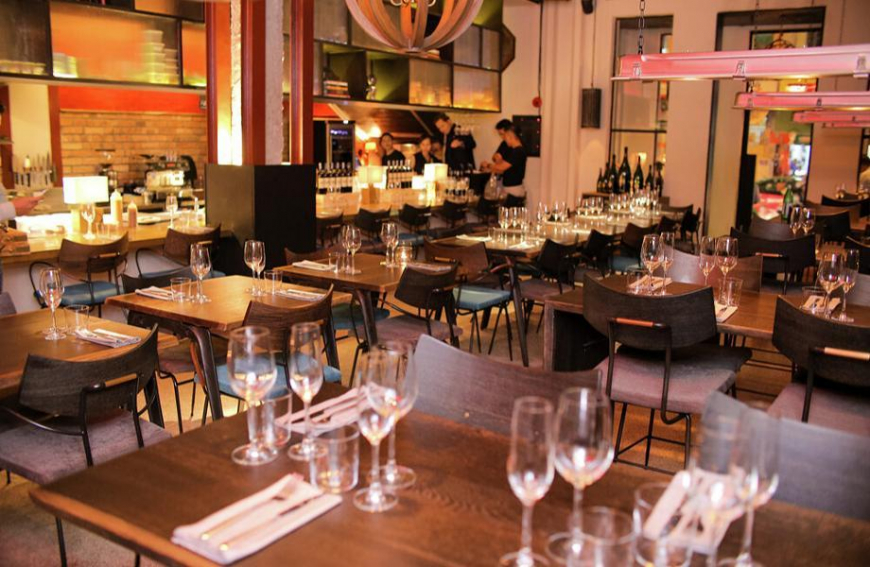
Source: Internet
This Mediterranean-style restaurant expanded from Bangkok into the quiet edge of District 1. Here in Ho Chi Minh City, It’s the go-to fine dining spot for foodies craving European cuisine, unlike anywhere else in the city. Dishes are heavy on local produce, combined with high-quality imported ingredients, and grilled on their signature wood-burning stove. Ask for wine pairings from the extensive list, or explore the wine cellar and choose a bottle.
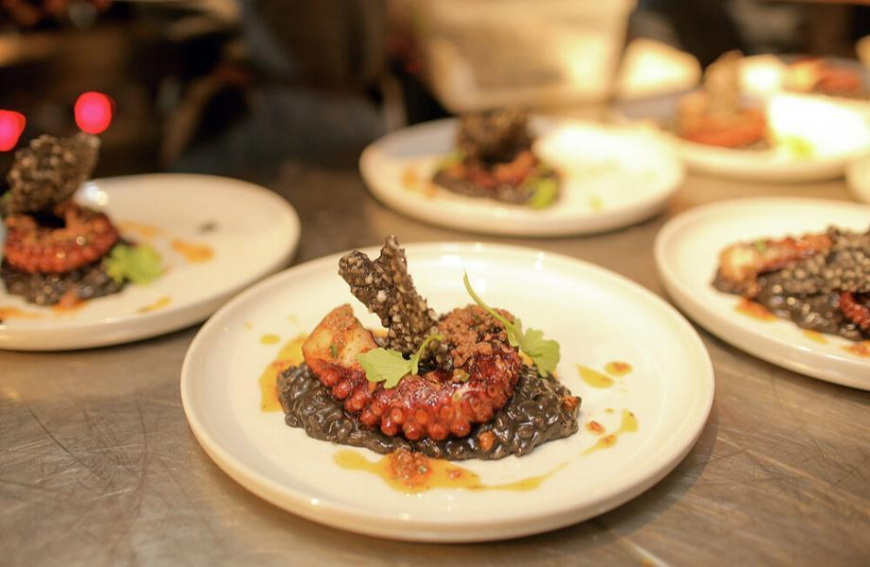
Source: Internet
The restaurant prioritizes comfort alongside taste, offering cozy experiences for groups of any size. Solo diners can sit at the bar counter and watch the chefs cook. An upstairs dining room can seat larger private parties, but the open kitchen downstairs is the star of the show.
Baozi
Baozi serves a range of Taiwanese food in a funky, hip, and modern restaurant in the heart of District 1. It was founded by a Vietnamese-British man who imported his wildly successful bao concept between cities from London to Ho Chi Minh City. The menu is a creative and Vietnamese-ified take on Taiwanese street snacks. The bao is the restaurant’s heart, soul, and namesake.
Much like the Vietnamese banh bao sold steaming hot from elderly bicycling vendors, a Taiwanese bao or baozi is a fluffy, soft, steamed bun stuffed with an endless variety of fillings, from savory pork and meat to sweet beans and custard. Notably, while Vietnamese bao are “closed,” with the fillings cooked inside, Taiwanese bao are “open”, with fillings sandwiched between two fluffy buns.
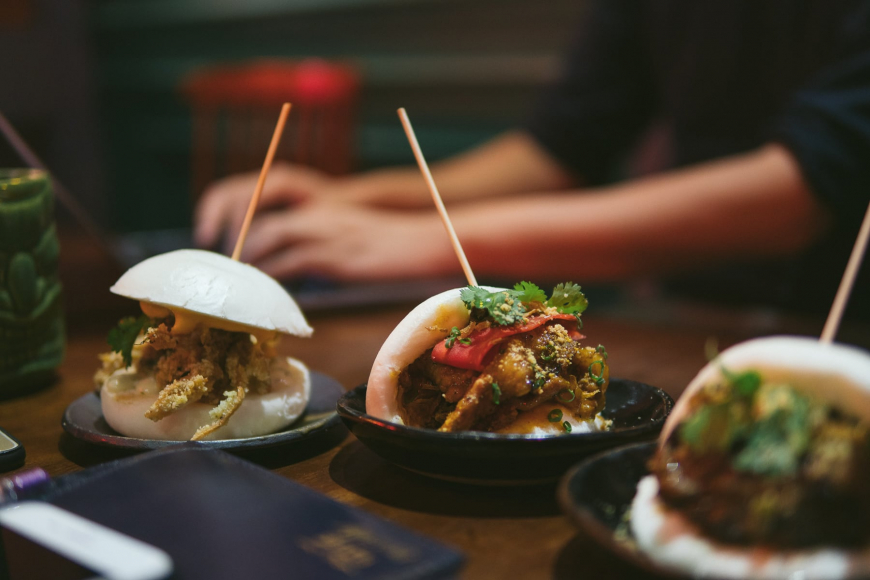
Source: Vietcetera
The founder himself recommends the scotch eggs, ramen, teriyaki ribs, pork belly rice, and the carrot cake.
AnAn Saigon
AnAn is the note to leave Ho Chi Minh City on, the star on the Christmas tree of Saigonese food. AnAn’s mission is to reimagine Vietnamese cuisine, presenting modern and international interpretations of local culinary staples.
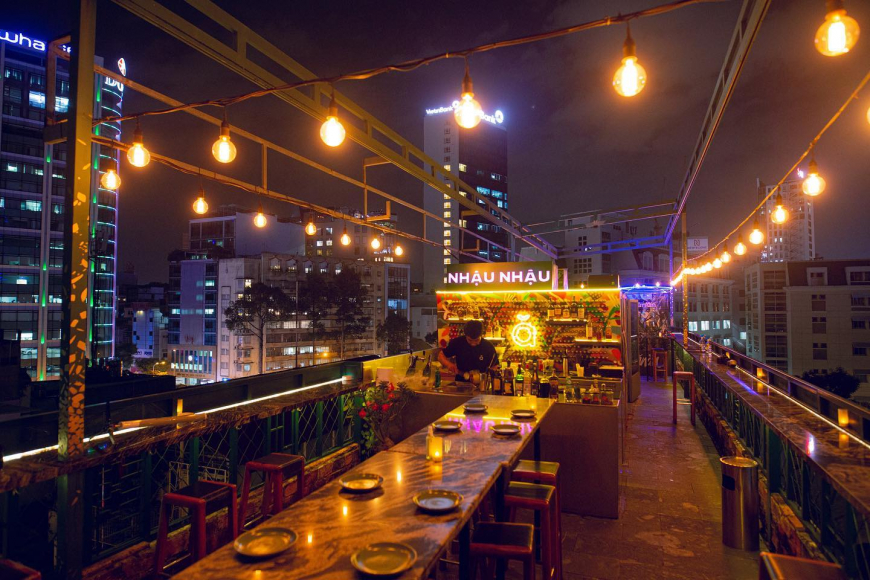
Source: Facebook - AnAn Saigon
Located right in Cho Cu, a local wet market, AnAn creatively fuses French culinary techniques with Vietnamese street foods to offer inspired and elevated takes on dishes that can be found on plastic tables in the market below.
The founder and head chef, Peter Cuong Franklin, calls the style “Cuisine Moi,” or “New Cuisine,” honoring the historical and cultural roots of Vietnamese food while looking progressively towards the culinary future. Head to the dining bar at the rooftop for views over central Saigon. It’s the perfect place for a pho with a new perspective.




